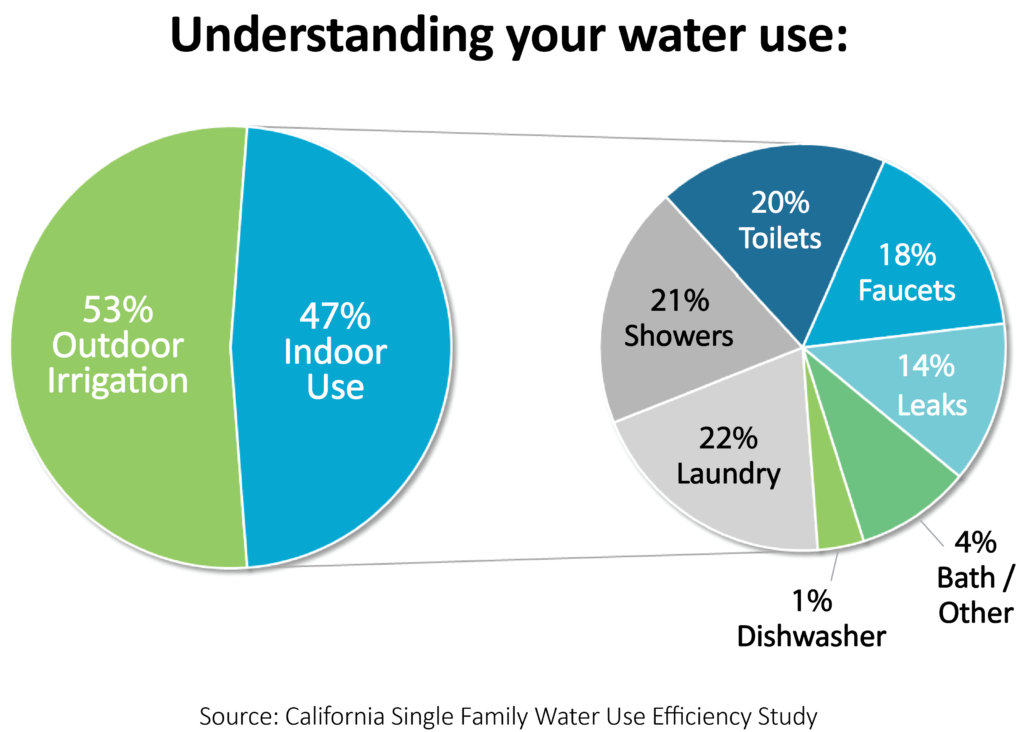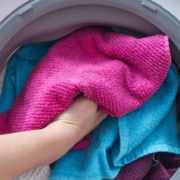COVID-19: Water Use When We Stay Home
Now that most of us are at home more, you may be wondering “how much more water am I using?” The good news is, it’s probably less than you think. This is because the activities that use the most water – such as outdoor irrigation, showering and doing laundry – happen at the same weekly frequency regardless if you and the family are spending your days at home or not.

Your water use will increase only slightly
Unlike our use of electricity, which we use continuously as we light our rooms, run our computers or stream shows, our use of water is more intermittent. This means that although we are home the entire time, using water may be limited to bathroom visits, washing our hands, cleaning dishes or doing laundry. This is good news for your water bill.
What about all the handwashing?
Surprisingly, washing your hands for the recommended 20 seconds does not use that much water. If you have faucet aerators or a newer faucet, each 20-second hand wash with the water running uses less than half of a gallon. Even still, faucets are responsible for 18% of the typical indoor water consumption. It takes 24 extra handwashing events per day over a 60 day billing cycle to increase your bill by one unit, which equals 748 gallons and costs you $4.98. You can use less water if you shut the faucet off while you soap up your hands, but you don’t have to. Public health is more important than water conservation. Wash your hands and stay safe.
What about additional toilet flushing?
Since you are at home and not at work, you are flushing your toilets more, this is where you may see a slight increase in your indoor use. After all, toilets make up an average of 20% of the typical indoor water consumption. The good news – it takes a lot of flushes to really increase your bill. The most common toilets in everyone’s homes use 1.6 gallons per flush, while newer toilets use 1.1 gallons per flush or less. It will take 467 flushes of al 1.6 gallon per flush toilet to use one unit of water. Note that older toilets can use 4-6 gallons per flush, and that changes the picture dramatically.
Do not flush ‘flushable’ wipes
It’s also important to note that you should not use your toilet as a garbage can. Do not flush “flushable” wipes, paper towels or disinfecting wipes down the toilet. These items wreak havoc on sewer systems. The last thing any of us need at this time is a backed up sewer.

What about the dishes from extra cooking and snacking?
You may be creating more dishes due to extra cooking and snacking, but fortunately, dishwashing does not use much water either. If you want to use less water, use the dishwasher. Dishwashers recirculate water and are highly efficient, only using 4-5 gallons per load.
Showering and laundry at home
The good news is that even though you and your family are home all day, you’re most likely not showering any more than you typically would. Showers are a larger portion of our indoor consumption, around 21 percent. The same is true for your laundry, which can be around 22 percent of indoor water use. But, not dressing for work each day may reduce your weekly laundry, offsetting increased us of water for other needs.
Our home’s ‘other half’
The big piece that is missing is what we use on our landscapes, and thankfully, this should not change. Outdoor watering is responsible for half of Helix Water District customers’ total use. So, while we may be concerned that being home will increase our indoor use, the largest potential for savings is still outdoors. An irrigation controller has more to do with the typical home’s water consumption than our indoor behaviors. If you have not been outside lately, the soil is still wet and most of us can leave our irrigation controllers in the off position for the time being.
This article was written by Helix Water District Conservation Technician Vince Dambrose, whom is currently working from home to keep his coworkers safe and healthy so that the district can keep your water flowing.



